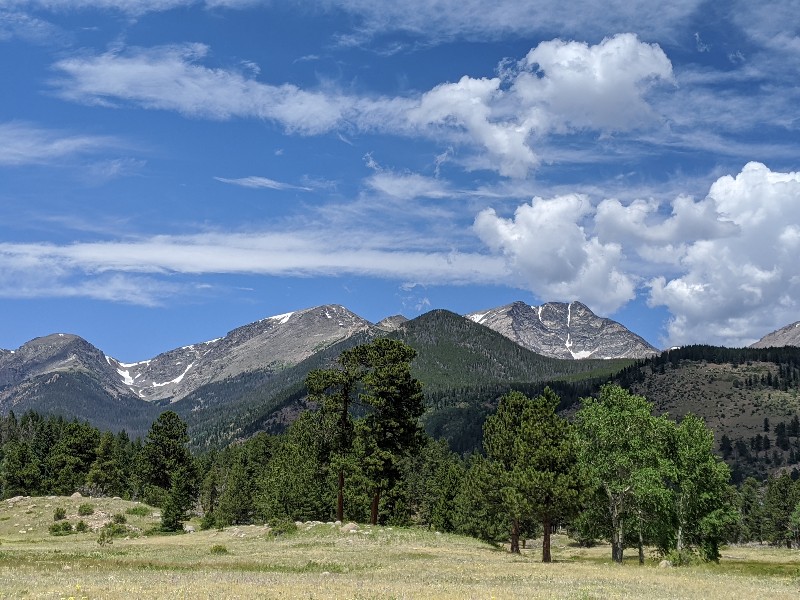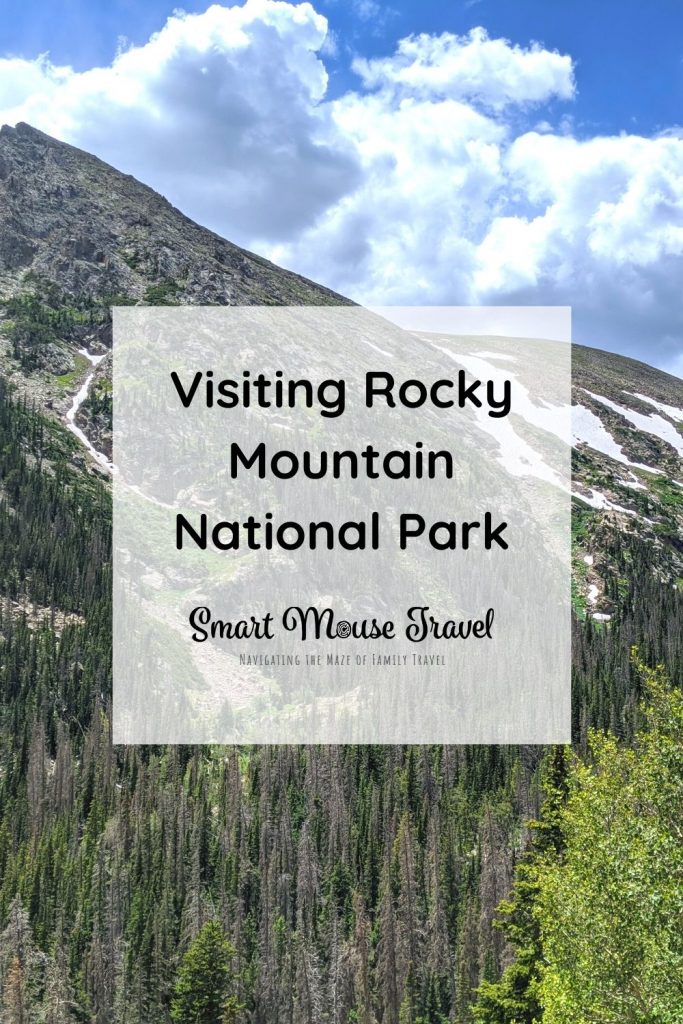Rocky Mountain National Park in Colorado is the third most popular US National Park with an average of 4.7 million visitors each year. Although a stunning park, visiting Rocky Mountain National Park without a plan can be a frustrating experience. Here are our best tips for a fun and exciting family visit to Rocky Mountain National Park.
Take Old Fall River Road To The Alpine Visitor Center

The most popular route to the Alpine Visitor Center is via Trail Ridge Road, a scenic two lane road that winds its way up to the tallest visitor center of Rocky Mountain National Park. However, if you are visiting when Old Fall River Road is open, July 4th until late September, this one lane road has even more stunning views and plenty of pull outs for parking for admiring the park’s beauty.
Old Fall River Road is only open to one way traffic since the dirt and gravel road is extremely narrow. Taking Old Fall River Road up to the Alpine Visitor Center and then the Trail Ridge Road back down has the best variety of amazing scenery at Rocky Mountain National Park.
Pack A Layer Even In Summer
Rocky Mountain National Park’s location high in the mountains means that the weather can vary greatly depending on which area of the park you visit. For example, Beaver Meadow Visitor Center was a comfortable 80 degrees, but when we got to the Alpine Visitor Center later in the afternoon it was windy and cold.
Plan on wearing layers or bringing them in your car. Wild swings in temperature are common even in summer.
Know Signs And Symptoms Of Altitude Sickness

Altitude sickness is a common occurrence in people not used to high elevations. Higher elevations have less oxygen in the air which cause several symptoms.
Some of the most common symptoms of Acute Mountain Sickness are:
- Dizziness
- Fatigue
- Nausea or Vomiting
- Shortness of Breath
If you feel any of these symptoms avoid going to a higher elevation. Instead head to a lower elevation where the symptoms should begin to subside. If you feel severely ill find a park ranger. National Park Rangers at Rocky Mountain National Park are experts on altitude sickness.
We are from the midwest and had been in the Denver area only one day when we went to the park. At the Alpine Visitor Center we felt very short of breath, had a mild headache, and my daughter was dizzy.
We immediately descended to a lower elevation where we felt better, but found we didn’t have the energy to hike like we normally would. Two weeks before we easily hiked 2 miles at Cuyahoga Valley National Park, but were tired after just a half mile walk around Bear Lake.
Limited Facilities At Rocky Mountain National
Park rangers help guests at all of the normal Rocky Mountain National Park visitor centers, but in tents outside the main centers. Gift shops are open, but with limited shoppers allowed in at a time.
Beaver Meadows Visitor Center has running water bathrooms. These were the last regular bathrooms we found at Rocky Mountain National Park due to COVID-19 restrictions. Vault toilets were common at other visitor centers and at popular trail heads.
Stay Hydrated And Wear Sunscreen At Rocky Mountain National Park
High elevation, mild temperatures, and low humidity levels mean dehydration easily occurs at Rocky Mountain National Park. Drink about twice as much water as normal to keep hydrated while visiting.
Less cloud cover and higher elevation also means sunburns happen more easily. Apply sunscreen regularly to avoid getting a sunburn at Rocky Mountain National Park.
Parking At Rocky Mountain National Park Is Limited
Certain hiking and scenic areas have small parking lots compared to demand. For example, the Bear Lake parking lot is often full early in the morning and then closed for hours. Even in the early afternoon when people are starting to leave the park, the Bear Lake parking lot is usually still pretty full.
There are several large parking areas around Rocky Mountain National Park. In these lots you can easily find parking and then use the free shuttles to get around the park.
Timed Entry Is Required For Rocky Mountain National Park
Update: Rocky Mountain National Park is resuming a timed entry system May 28th through October 11, 2021.
To limit the number of visitors in the park during COVID-19, Rocky Mountain National Park is reinstituting a timed entry reservation system for summer and early fall 2021. Rocky Mountain National Park reservations open up one month in advance for the entire next month. For example, on July 1st, reservations for the entire month of August go live.
If you miss making these advance reservations, the NPS releases some additional park reservations at 5pm the day before on recreation.gov.
In 2021 the timed entry system has two different reservation types. The first allows visitors access to the popular Bear Lake Road Corridor and the rest of Rocky Mountain National Park. Bear Lake Road Corridor reservations are needed from 5am until 6pm each day.
The second permit type is for most of Rocky Mountain National Park, but excludes the Bear Lake Road Corridor. These reservations are required from 9am until 3pm daily.
Before and after those times anyone may enter Rocky Mountain National Park. However, if entering after reservation times be prepared to wait. We saw an almost mile long line of cars waiting to enter the park a little after 5 pm, which is when the park opened without reservations, in 2020.
Final Thoughts On Visiting Rocky Mountain National Park
Visiting Rocky Mountain National Park was one of the best parts of our road trip to Colorado. The beautiful snow capped mountains, scenic drives, and incredible hiking trails make Rocky Mountain National Park a bucket list national park. Make sure to take at least one day to visit Rocky Mountain National Park if you are in the area.
Pin it for later:

